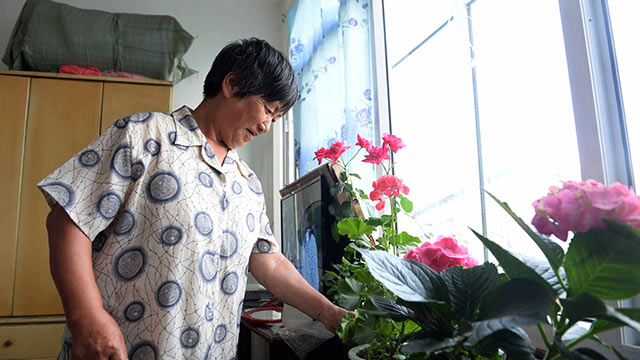China eyes life expectancy of 79 in 2030 health plan
2016-10-25
Xinhua
The “Healthy China 2030” blueprint, released on Oct 25 by the Communist Party of China (CPC) Central Committee and the State Council, includes 29 chapters that cover areas such as public health services, environment management, the medical industry, and food and drug safety.
While acknowledging the country’s health achievements so far, the blueprint noted that industrialization, urbanization, an aging population, as well as environmental and life style changes have created new challenges to the heath of the people, and state-level strategies are needed to solve “major and long-term health-related issues.”
Health as habit
In order to reach the goal, the document said that health education will be incorporated into the entire education system, and a national nutrition plan should be established and implemented, with efforts to research food nutrition and monitor residents’ nutrition status.
According to the plan, the number of people “frequently participating in physical exercise” should increase to 530 million by 2030 from 360 million in 2014, and the smoking rate of those aged 15 or above should be lowered to 20 percent.
“Health is not just about curing illness. Prevention is the key,” said Liu Yuanli, head of the public health school under the Chinese Academy of Medical Sciences.
“With a focus on healthy life styles, the document places emphasis on health knowledge and skills, and encouraging good habits. This is the best approach,” Liu said.
The document suggested that to cut the number of smokers, measures such as higher taxes on cigarettes and stricter legislative should be rolled out. Moreover, it offered proposals for mental health intervention, safe sex and drug-addict rehabilitation.
In addition, the infant mortality rate should be lowered to five out of every 1,000 live births by 2030, down from the current eight. Mortality rates for children under the age of five and pregnant women should also decrease notably.
Health for all
China will also endeavor to ensure residents of rural and urban areas enjoy equal access to basic health services, the blueprint said.
To this end, according to the blueprint, China aims to have three certified or assistant doctors, and 4.7 registered nurses, for every 1,000 residents by 2030.
In recent years, the central government has invested heavily in improving medical services at the local level, it has financed the building of community health service centers, township health centers and village clinics, said Li Bin, head of the National Health and Family Planning Commission.
The greatest challenge lies in a shortage of health personnel at the local level, Li said, adding that every locality was different and should be treated as such when problems are addressed.
Better health environment
China also wants to continue to improve the environment, evident by increases in days of fine air quality and high-quality surface water.
In 2020, cities at the prefecture level and above will enjoy good air quality during more than 80 percent of the year, with further progress expected by 2030, the blueprint said.
In rural areas, in particular, greater efforts will be made to improve garbage disposal and treatment of sewage, as well as expanding the use of clean energy and access to safe drinking water.
By 2030, China will also have a nationwide network for monitoring food safety and recording food-borne diseases, according to the blueprint.
The blueprint suggests that more must be done to modernize techniques, equipment and products that are highly polluting or pose risks to the environment, and transforming industries like iron and steel, cement, petrochemicals so they work within emission standards.
It also called for more to be done to improve the handling of the standardization of agricultural production, evaluation of agro-products quality, proper handling of pesticides and veterinary drugs, as well as heavy metal pollution.

